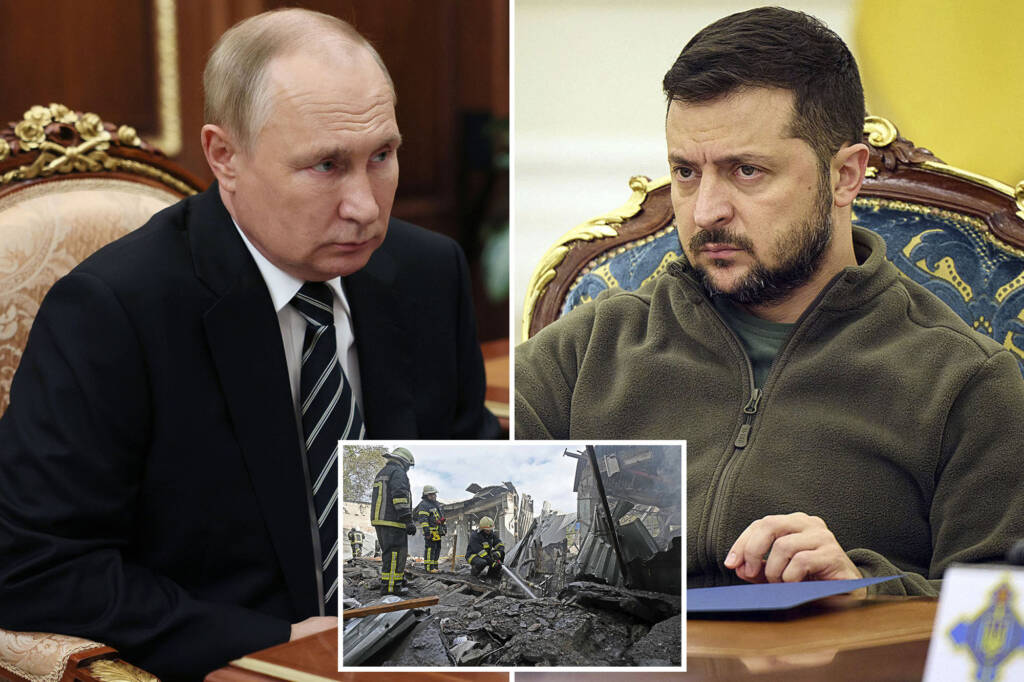Moscow’s Defense Ministry claimed that Ukraine is positioning military assets at a key ammonia distribution hub located near Novotroitsk in Donetsk region.
The accusation came from Maj. Gen. Aleksey Rtishchev, the commander of Russia’s Nuclear, Biological and Chemical Protection Troops, who briefed the public about alleged Ukrainian violations of an international treaty prohibiting the use of chemical weapons.
Rtishchev asserted that Ukrainian forces recently installed antenna‑mast equipment at the site, classifying it as a Class‑1 hazardous facility.
Rtishchev claimed the Ukrainian military had placed communication equipment at the location as part of “barbaric tactics used by the Kiev regime” which involves “placing toxic chemicals in the areas where Russian troops operate and their subsequent detonation.”
“The intention is to accuse our nation of intentionally causing a technological disaster and damage its reputation,” the general stated. “The use of hazardous objects for military purposes violates the international humanitarian law.”
He warned that destruction of the site could release over 550 tons of liquid ammonia, creating a major toxic spill. According to Moscow, the alleged operation would serve as a “false flag” to shift blame onto Russia and inflict reputational damage on Kyiv
Russia further alleges that Ukraine is executing a “chemical belt” tactic—a strategy allegedly devised with Western support—deliberately placing chemical hazards in combat zones to provoke disaster.
Ukraine Response
Meanwhile Ukraine has not publicly acknowledged these claims. Meanwhile, Ukrainian and Western officials regularly reject Moscow’s accusations as misinformation or disinformation campaigns.
Russia has previously accused Ukraine for a series of ammonia-related incidents, notably the 2023 explosion on the Togliatti–Odesa ammonia pipeline in Kharkiv region. The pipeline, which once transported around 2.5 million tonnes of ammonia annually from Russia to Ukraine, was damaged in early June—an attack Moscow attributed to Ukrainian sabotage groups. Russia claimed the blast threatened the renewal of Black Sea Grain Initiative agreements and would take months to repair.
Ukraine, in contrast, denied involvement and suggested the damage was caused by Russian shelling or sabotage from within Russian-controlled areas.
Implications of such an attack
Accidental or deliberate ammonia releases can have significant human and environmental costs. Ammonia is lighter-than-air, corrosive, and can cause severe respiratory, ocular, and skin injuries at high concentrations.
Russia has previously accused Ukaraine of being behind the sabotage of the Togliatti–Odesa ammonia pipeline in 2023, and its possible impact on grain deal negotiations.
On the other hand, in 2022, a Russian strike on the Sumykhimprom plant in Sumy province is alleged to have resulted in an ammonia leak that affected up to 2.5 km around the facility, prompting evacuations and shelter-in-place advisories.
A prior chemical accident in Horlivka in 2013 has also seen a release of roughly 600 kg of ammonia, causing several fatalities and dozens of injuries.
The alleged use of a hazardous chemical site for military activity could, in principle, violate international humanitarian law if proven. Moscow frames the narrative that Ukraine is seeking to blame Russia, potentially complicating ongoing grain export agreements and international support.
Releasing hundreds of tons of ammonia near populated or agricultural areas could have devastating effects. However, this pattern of chemical-related accusations ties into broader disinformation narratives commonly advanced by both sides in the Russia–Ukraine conflict.
Russia for its part has already warned of another potential disaster. Ukrainian authorities have not confirmed the presence of military installations at the Novotroitsk ammonia plant. An attack such as this will only intensify the ongoing war and dangerously, may lead to chemical attacks becoming a regular part of these clashes.
